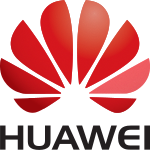
Get ready to learn how to pronounce a new Chinese brand name: Huawei.
The Chinese telecom firm had a surprise hit at Mobile World Congress in Barcelona this week with its stylish Huawei Watch. And that looks like only the beginning of a much bigger push to entrench itself in popular consciousness as a maker of consumer smartwatches and smartphones via “traditional advertising, online promotion and sports team sponsorships,” as its U.S. spokesman told Reuters.
See also: Huawei Just Made The Best-Looking Android Wear Smartwatch Yet
On top of that, Kevin Yang of iSuppli’s China Research division claims (via CNET) that Google has tapped Huawei to make the next iteration of its Nexus smartphone line. If true—and if the resulting phone is a good one—that could give the company significant cred with tech-savvy shoppers.
In other words, there’s suddenly a lot going on with Huawei. (Oh, and that pronunciation? Try WAH-way.)
Who Is Huawei?

Though the buzzy Huawei Watch may be the first time U.S. consumers have heard of the company, Huawei has produced telecom equipment in China since the late 1980s. Founded in 1987 by a former engineer in the People’s Liberation Army, the company was born of a Chinese government initiative to build up domestic technological infrastructure.
Much of Huawei’s early business centered on building phone and Internet infrastructure throughout the nation, making it a rough analogue to Cisco. By the late 1990s and early 2000s, Huawei had started expanding operations into other territories, supplying technology for new mobile networks throughout Asia, Europe, and Australia.
In 2009, Huawei unveiled its first Android smartphone. Since then it’s built an impressive lineup of low- to mid-tier Android and Windows Phone handsets, although its efforts to gain a foothold in the U.S. market haven’t gotten it very far yet.
A Little Trouble From Big China
The company has faced other headwinds, particularly involving repeated—though never clearly proven—charges involving the security of its telecom equipment. In 2012, the House Intelligence Committee released a report accusing Huawei of providing the Chinese army’s cyberwarfare unit access to its networking equipment.
Huawei denied those assertions, although suspicion that the company maintains surreptitious connections to the Chinese government continues to dog its U.S. business efforts. Ren even reportedly said in 2013 that Huawei planned to exit the U.S. market rather than be stuck “in the middle of U.S-China relations.”
But that’s all in the past. A White House review of allegations against the company found no clear evidence that Huawei had spied for China, and the company later backtracked on its threat to leave the U.S.
On a separate front, Huawei has run into intellectual property issues. Last year T-Mobile took Huawei to court over allegations that the Chinese company had stolen its cell phone testing technology. Prior to that, it’s been hit with similar IP lawsuits from the likes of Motorola and Cisco, to name a few.
Watch Out
Despite its turbulent relationship with the U.S., Huawei’s recently revealed smartwatch could mark a turning point for the company. The Huawei Watch looks like a premium device and resembles nothing else on the market, although it’s still not clear how well it works or how long its battery will last.
The Apple Watch is on its way this April, and it’s a beautiful piece of tech. The Huawei Watch, meanwhile, could give Apple a run for its money in terms of design and style. It boasts a popular round-face design, sapphire display, premium metal body construction, and a heart rate monitor. In short, the Huawei Watch looks like it’ll do everything the Apple Watch will do—just for Android.

This is the first device to come out of Huawei that’s made anyone look twice at the company. If it’s priced reasonably and can actually make good on its promises, the Watch could change Huawei’s reputation as a maker of less-than-impressive devices. And it could give Google a shiny new weapon in the coming wearable war against Apple.
All in all, whether it’s behind the next Nexus or not, you’d better learn how to pronounce “Huawei.” You’ll be saying it a lot more pretty soon.
Photos and logo courtesy of Huawei

















